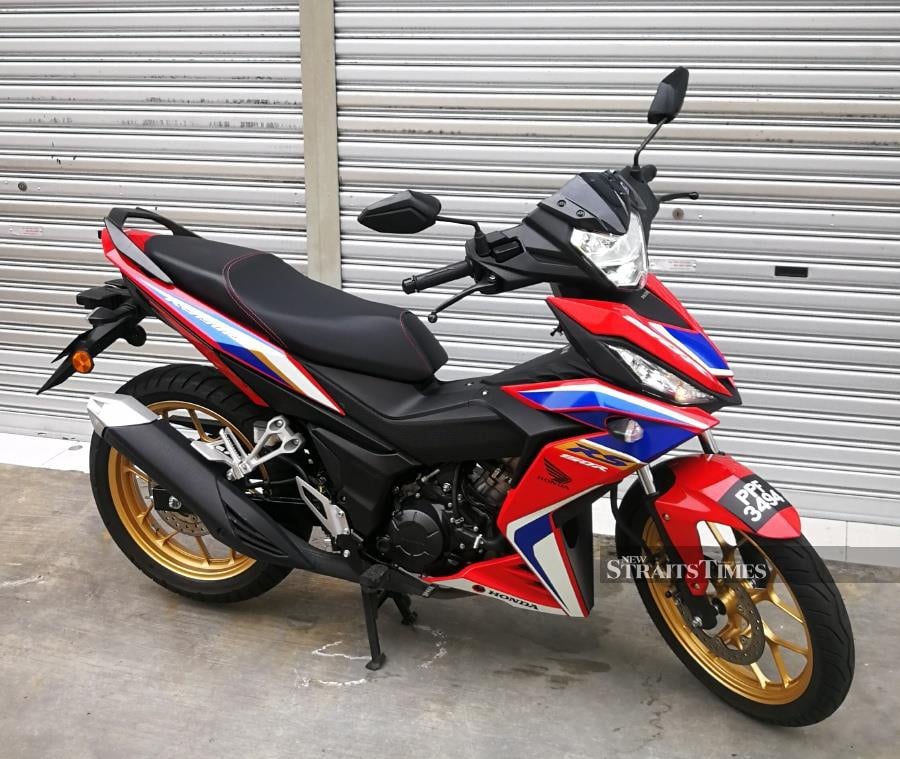ONE of the primary functions of a motorcycle is daily commute - to get from point A to point B in a decent amount of time and, perhaps, in comfort as well.
Soichiro Honda hit the nail squarely on its metal head when he designed the Honda Cub, a rapid, urban assault vehicle that could turn snarled-up city roads into a personal playground and yet only needed 50cc and three speeds.
For the first time, one could promise to make three appointments in a day and yet arrive on time (weather permitting, of course).
Little did Soichiro know what is currently transpiring in the present. Just like most other motorcycle categories, the cub niche is metamorphosing into smaller niches.
There are the pure commuters, larger capacity ones with special cubby holes and large tanks, retro-look cubs and, of course, the SuperCub (nothing to do with Honda's own 125cc offering with the same name).
SuperCubs are sporty versions of the commuter models and range from 150cc to 185cc. Most offer six-speed transmission, manual clutches, monoshock rear suspension, front and rear discs, wide cast alloy wheels and high power outputs. If you need to get to those three appointments a day, why not do it in style.
Honda offers its RS150R V2 in the SuperCub category. Now in its second version, the RS is facelifted and given a few extra knickknacks in order to compete with its greatest rival, the Y15ZR Yamaha.
There are other pretenders but these two are the prizefighters in the category and have the largest followings. The Yamaha has the lower engine specifications but nicer styling (subjective) while the Honda has a better engine specifications and more subdued style.
The V2 aims to change this perception with the latest facelift. However, it is based more on the Indonesian Supra GTR rather than the more aggressive Vietnamese Winner X. However, the updates are more subtle and will keep the second-hand prices keen as ever.
The colour schemes are gorgeous, with our test unit in Honda's famous tricolours of Red, White and Blue with gold wheels a particular favourite. Other choices are Pearl Magellanic Black, Pearl Nightfall Blue and the erstwhile Repsol Edition commanding a premium over the others.
Excluding road tax, insurance and registration, the RS150R V2 retails for RM8,199 with the Marquez Replica costing an additional RM300.
The liquid-cooled, single-cylinder, 149.2cc engine is equipped with four valves and DOHC and unchanged from the V1. It punts out 15.6PS at 9,000rpm and 13.5Nm of torque at 6,500rpm. The six-speed gearbox and gear ratios are also unchanged.
However, now finding neutral is much easier than before and gear changes are much more fluid and precise.
A major design change for the engine is the deletion of the kickstarter. It's not a big deal really as a weak battery will still not allow the engine to run for long (the FI system needs a fully charged battery).
The redesigned body panels now see the rear light as a separate unit from the turn signals (which have their own little spoilers. Neat!)
Faux carbon fibre accents are dotted here and there.
The other major change for the V2 is the monochrome LCD meter panel but glare is a problem sometimes (as with almost all other LCD panels). A larger flyscreen would help shield it from the sun.
The 4.5-litre fuel tank remains the same, as does the non-existent space under the seat.
A notable omission is a seat release mechanism in the ignition. This would have increased the V2's appeal as well as reduce key scuffs in the bodywork as the lock is not easily accessed.
The seat (764mm) is the same; firm and flat and good for a tank of fuel (hardly 200km per tank), which is just as well.
The suspension (telescopic front, monoshock rear) is also firm but I am informed that they break after a few miles and become more compliant.
IRC tyres cover the wheels and dry weather performance is excellent. In the wet, the tyres are less than trustworthy but since the sizes are the usual 90/120 F/R combo, there are some excellent choices to be had. Front and rear disc brakes are up to par for stopping a 122kg bike.
Overall, the RS150R V2 has been improved in the areas where it needed help mechanically and less so cosmetically.
This is probably a good thing because the V2 is not really lacking in that department and actually ahead of its rivals in the engine department.
A few tweaks to make it smoother and easier to shift actually makes the V2 an even better all-rounder and more pleasant around town.
After all, cosmetic parts are plentiful for the V2 not to mention engine hop-up tweaks.
All in all, the RS150R V2 is still a strong challenger for the best SuperCub honours.





